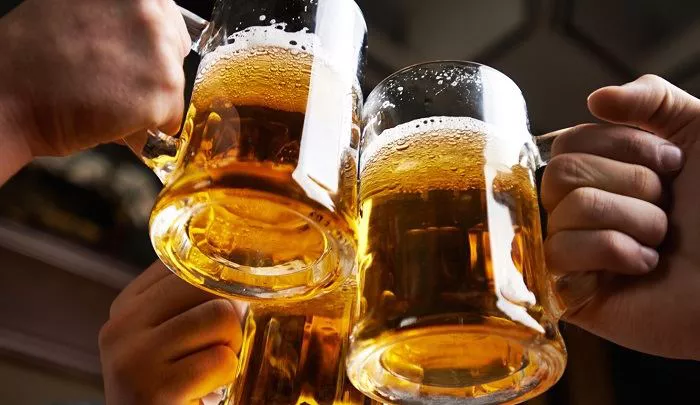When it comes to alcoholic beverages, the world offers a rich tapestry of options, but three categories stand out: beer, wine, and spirits. While all three share the common thread of alcohol, they each have distinct characteristics, production methods, and flavors that set them apart. In this comprehensive guide, we’ll unravel the differences between beer, wine, and spirits to help you appreciate the unique qualities of each.
1. Beer: The World of Brews
Ingredients: Water, Malted Barley, Hops, Yeast
Production: Beer is made through fermentation, where yeast consumes sugars from malted barley, hops are added for bitterness and aroma, and water forms the base. It undergoes fermentation and is typically aged for a shorter period. Carbonation is natural or added.
Varieties: Beers come in numerous styles, including lagers, ales, stouts, and pilsners, each with its flavor profile, color, and alcohol content.
2. Wine: The Elegance of Grapes
Ingredients: Grapes
Production: Wine is crafted primarily from fermented grapes. The winemaking process varies for red, white, and sparkling wines, involving crushing, fermentation, aging, and bottling. The flavors are influenced by grape variety, region, and aging.
Varieties: Wine includes red, white, rosé, and sparkling varieties, with countless grape varietals and regions worldwide.
3. Spirits: The Art of Distillation
Ingredients: Grains, Fruits, Sugarcane, etc.
Production: Spirits are distilled alcoholic beverages made from various sources, including grains (whiskey, vodka), sugarcane (rum), grapes (brandy), and more. Distillation is the process of heating, vaporizing, and condensing to increase alcohol content.
Varieties: Spirits encompass a wide range, including whiskey, vodka, rum, tequila, gin, brandy, and liqueurs. Each has unique ingredients, distillation methods, and aging processes.
Key Differences:
Alcohol Content: Spirits have the highest alcohol content, typically 40% ABV (alcohol by volume), while wine averages around 12-15%, and beer falls between 4-6%.
Aging: Spirits often undergo aging in barrels for enhanced flavor, while wine aging varies by type. Beer is generally not aged as long.
Carbonation: Beer and some spirits may be carbonated, while wine is typically still.
Ingredients: Beer incorporates malted barley, hops, and yeast. Wine focuses solely on grapes, while spirits have a broader range of base ingredients.
Serving: Beer is often served chilled, wine at specific temperatures based on type, and spirits may be served neat, on the rocks, or in cocktails.
Varieties: Beer and spirits offer diverse styles and flavors, while wine showcases a vast spectrum of grape varieties and regional influences.
Conclusion
In the world of alcoholic beverages, beer, wine, and spirits each have their own allure and unique characteristics. Whether you prefer the complexity of wine, the versatility of beer, or the strength of spirits, understanding the differences can enhance your appreciation of these libations. Each category has a rich history, diverse options, and a place in the hearts of connoisseurs and casual drinkers alike.
FAQs related to Beer, Wine, and Spirits:
1. What are the main components of beer, wine, and spirits that contribute to their flavors?
The flavor profiles of these beverages are influenced by various components, such as hops and malt in beer, grape varietals in wine, and the source ingredients in spirits.
2. How do the alcohol content and serving methods differ among these beverages?
Beer, wine, and spirits have varying alcohol content, and the methods of serving, including temperature and glassware, also differ.
3. Are there specific regions known for producing exceptional beer, wine, or spirits?
Yes, many regions worldwide are renowned for their production of exceptional beverages. For example, Bordeaux is famous for wine, Scotland for whiskey, and Belgium for beer.
4. Can you explain the significance of aging in the production of spirits and wine?
Aging plays a critical role in the development of flavors and character in spirits and wine. It can vary from a few years to several decades, depending on the type.
5. How do the fermentation processes differ between beer, wine, and spirits?
While all involve fermentation, the ingredients, yeast strains, and techniques used in the fermentation process vary significantly among these beverages.
6. Are there health considerations or nutritional differences between beer, wine, and spirits?
Beer, wine, and spirits have different nutritional profiles and potential health effects. Wine, for example, is often associated with antioxidants.
7. What are some famous cocktails that use spirits as their base, and what distinguishes them from straight spirits?
Cocktails like the Martini, Margarita, and Mojito use spirits as their base but incorporate various mixers and garnishes to create unique flavors and profiles.
8. Can you provide recommendations for pairing these beverages with food?
Pairing beer, wine, and spirits with the right foods can enhance the dining experience. For instance, wine often pairs well with cheese, while beer complements burgers and pizza.
9. What are some cultural or traditional aspects associated with the consumption of these beverages?
Each category of beverage often has cultural and traditional significance in different regions and communities, including rituals and celebrations.
10. Are there any emerging trends or innovations in the production and consumption of beer, wine, and spirits?
The world of alcoholic beverages is continuously evolving, with trends such as craft brewing, organic wine production, and craft spirits gaining popularity. Keeping up with these trends can be exciting for enthusiasts.


